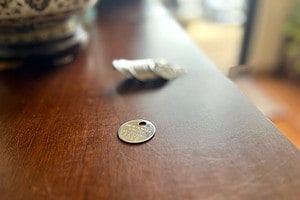Over the centuries many scholars have argued that studying history can help us in the future. Woven in the stories and accounts of long ago are lessons we can use today, some of which were hard learned.
Today, as the entire funeral industry is rapidly changing and public sentiment around traditional services is shifting, we find ourselves reflecting back on cremation practices of the past. The history of cremation reveals that the practice has been around for thousands of years. Social change caused the practice to all but disappear in Europe and the U.S., but the practicality of cremation has made it the most popular end of life service once again.
More Choices Allow for More Freedom in Death
The French Revolution was largely about people who felt powerless taking back control. One contention that the revolutionaries had was the church’s ban on cremation. They promoted cremation as a way to take back being able to decide how their body would be disposed of after death.
The lesson here is that funeral services are highly personal and people want to be able to make their own choices. Funeral Today, Green Cremation Texas and many other funeral homes advocate for advanced planning as a way to ensure your wishes are respected.
Cremation is Often the Safest Option
Not even considering environmental health, cremation is often the safest option in terms of human health. This is evident by the use of cremation during pandemics and outbreaks of contagious illness.
Just as we saw in the latest pandemic, the use of cremation increased during earlier times when infection was a serious threat to people handling the deceased. For example, cremation was used to dispose of the people who succumbed to the plague even though it had rarely been used for hundreds of years. There’s a famous account of 60,000 cremations in a single week in Naples during the Black Plague.
Also of note is that cremation was repopularized in Western cultures in the 1800s due to concerns over how healthy burials actually were. The earliest modern cremation chamber was designed in 1873 by Professor Ludovico Brunetti strictly to improve hygiene and health standards for disposing bodies.
Cremation Doesn’t Mean Forgoing a Final Resting Place
One reason people were hesitant in the past to choose cremation was the concern that they would have no final resting place. Obviously, this was a concern centuries ago as well, but it didn’t hold people back from choosing cremation. Instead, the concept of columbariums was formed in ancient Rome. By that time decorative urns were already being used as receptacles. Once columbariums were built, families began storing the urns in a dedicated niche.
Prior to that time, ancient societies in Hungary and Italy created cemeteries specifically for cremated remains during the Bronze Age (2500 to 1000 B.C.). It’s a practice that even the Roman Catholic Church now condones so long as the cremated remains are in a final resting place at a cemetery.
These early cremation practices are being used today by more and more people. We’ve finally gotten past the hang up of the body not going into the ground in a grave, and know what people discovered thousands of years ago – you don’t have to choose between cremation and having a dedicated place for the cremains to stay.
At Green Cremation Texas we help families plan personalized cremations that are eco-friendly and affordable. Please contact our knowledgeable team any time of day by phone, text or email to learn more.





